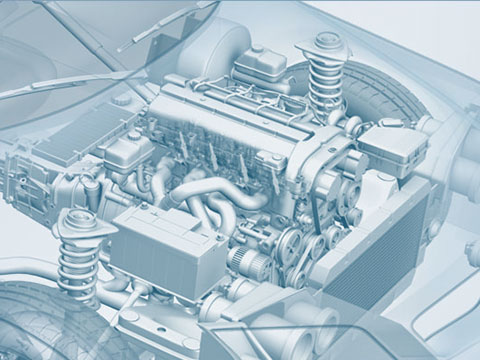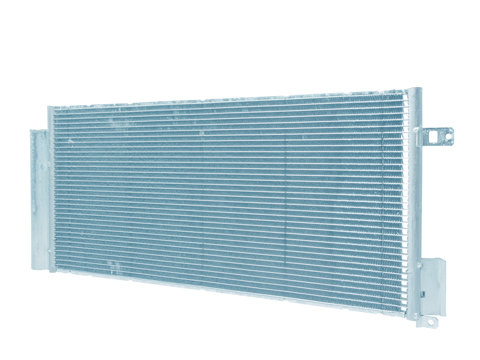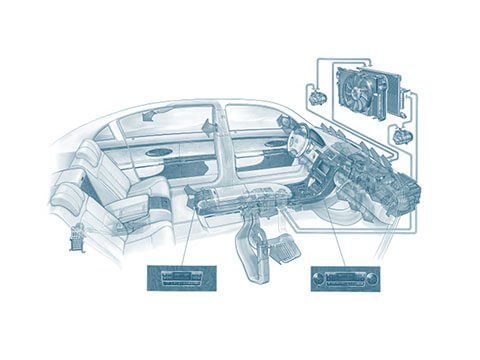Air Conditioning | Thermal Management
The heating and air conditioning systems in hybrid passenger cars are partially powered by energy from the battery. The more intensively they are used, the higher the energy consumption will be and the lower the electric range.
On vehicles powered by a conventional internal combustion engine, the heating system uses lost heat from the engine to warm up the vehicle interior. By contrast, electric drives are very efficient and lose only a small amount of heat to their surroundings, meaning there is not much that a heating system could use. As the number of electrical systems in hybrid vehicles increases, the amount of energy from the fuel that is available for cooling purposes and the amount of waste heat coming from the internal combustion engine both reduce. Therefore, hybrid vehicles often use extra measures in order to adequately heat or cool the interior.
Auxiliary heating systems such as electric auxiliary heaters or heat pump systems can be used for this purpose. With these systems, the energy required is taken entirely from the battery. However, this also reduces the electrical range.
Electric auxiliary heaters integrated into the ventilation system are a simple and effective but also very energy-intensive way to heat the vehicle, which is why energy-efficient heat pumps are now also being used. They not only provide heating, but also cooling during the summer by acting as an air conditioning system.
Seat heating systems and heated windows bring the heat directly to where it is needed, thereby also reducing the amount of heat required for the interior.
In plug-in hybrids, the design of the refrigerant circuit that cools the vehicle interior as well as the battery is similar to that on all-electric vehicles. Just like all-electric vehicles, full-hybrid passenger cars with and without a plug-in hybrid function have an electric compressor that powers the air conditioning circuit. This e-compressor is available when the vehicle is being driven both under electric power and by the internal combustion engine. It enables fuel to be saved as the compressor drive energy required when the engine is not running is provided by the recuperated energy stored in the battery.
Compressor oil
The function of the compressor oil is to lubricate the moving parts in the compressor. The oil film also keeps the rubber seals in the refrigerant lines and connections supple and reduces diffusion.
High voltage PTC heaters
High voltage PTC heaters are interior heating systems for electrically powered vehicles that are independent of a drive system.
Kältemittel
Kältemittel werden in Kälteanlagen als Arbeitsmedium eingesetzt. Auch in Pkw-Klimaanlagen kommen Kältemittel zur Wärmeübertragung zum Einsatz.
Thermal management
As we all know, engine compartments have got much smaller, resulting in an enormous build-up of heat that must be dissipated. Much is being asked of modern cooling systems where cooling down...
Thermostat
The thermostat is an important component in liquid cooling. It ensures that the combustion engine reaches its ideal operating temperature as quickly as possible and then maintains this temperature in all operating conditions.




